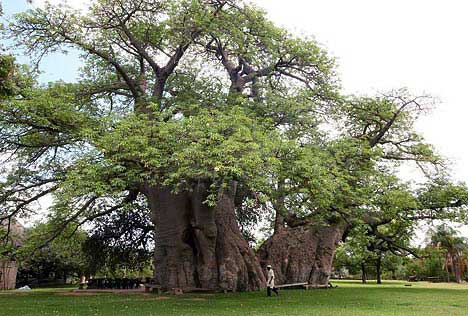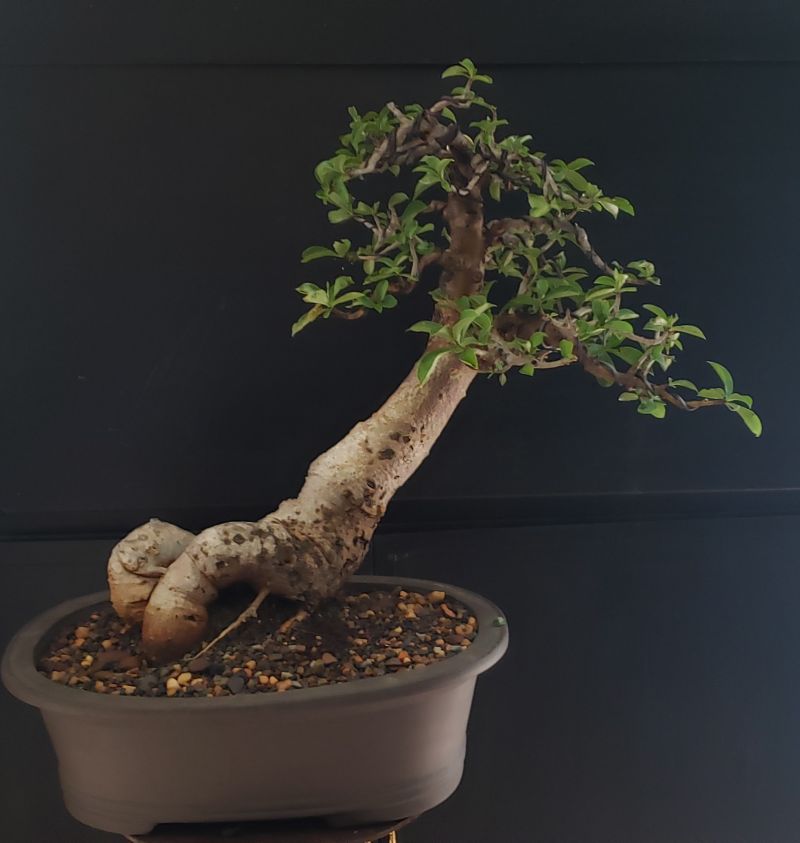UPCOMMING EVENTS / NOTICES
Our gate is closed for security. Please hoot at the gate to get our attention to open.
Mon - Fri 8am to 5pm
Sat 8am to 1pm
Sun Closed
NEXT BRAT MEETINGS
Seeds need to be removed from fruit and cleaned.Seeds from fruits as old as 40 years have been successfully germinated. The shell of the bean like seed, is very hard and should be mechanically damaged to assist in germinating. A Dremel, with its sand paper bit, is a good solution. Also the seed can then also be placed in boiling water for 24hrs - do not boil the seeds. Leave in full sun after planting. It is very important that soil mixture has good drainage. Do not over water during first few weeks to prevent rotting. Some fungicide is also important to stop rot. Seeds take between 5 - 14 days or even longer to germinate. Soil mixture for seeds: 2 parts coarse river sand and one part compost or sandy soil - never use clay soil.
One of the earliest written references to the Baobab tree was made by the Arabic traveller, Al-Bakari in 1068. In 1592, the Venetian herbalist and physician, Prospero Alpino, reported a fruit in the markets of Cairo as "BU HUBAB". It is believed that the name is derived from the Arabic word Bu Hibab which means fruit with many seeds.
Common names include bottle tree and monkey bread tree. Baobab - derived from African fokelore "upside-down-tree". The story is after the creation each of the animals were given a tree to plant and the stupid hyena planted the baobab upside-down.
The baobab is the national tree of Madagascar.
Height is 5-25m tall and trunk diameter of up to 7m. The Baobab can store up to 120 000 lt of water inside the swollen trunk to endure harsh drought conditions.
All occur in seasonal arid areas and are deciduous, losing leaves during dry season. It is believed that the elephant must digest the seed before it will germinate as the heat and stomach acids help to soften the shell. However seeds can be germinated by artificially softening the shell with hot water or damaging the shells mechanically. Baobab trees are a succulent. Being a succulent the general belief was that it was not fit as bonsai material. This has been proven wrong. The late John Naka, after seeing these trees in the Kruger National Park and after visiting Johan and Berrie Ras' baobab trees, said that the baobab had promising characteristics to become a very popular bonsai tree in South Africa. This has proven to be correct over the last few years


Once the leaves start turning yellow at the beginning of autumn - gradually slow down watenng. Stop watering when plus minus 50% of leaves turn yellow. Do not water trees during the dormant (winter) period. However, some people do water in winter, mainly in hot areas, but according to experience chances are very good that trees will rot and may die.
Slowly start watering again when the trees are sprouting new buds, usually mid September.
Do not over water during this period but gradually increase water and fertiliser (preferably organic) as more and more leaves develop.Only once the tree is in full leaf can it receive as much water and fertiliser as other trees.
Always let the surface soil dry out a bit before watering again. Adjust watering during rainy periods.
Baobabs like direct sunlight for as long as possible during the active growing period. The more sun the better they grow. Preferably keep under a hail net or not more than 30% shade net. Never keep indoors during growing period. During winter the tree MUST be kept anywhere indoors, on a wall unit or even under the bed or in a cupboard. The tree does not need any sunlight during the cold winter months as it is completely dormant. Protect the trees from cold (below 10 deg C) and frost - It is recommended keeping them indoors, this solves the problem of cold and frost and the temptation of watering them where they can also be displayed.

Baobabs are easy to transplant as long as you stick to the basics. Baobabs can be transplanted from September to December. Baobabs have potato like roots - it is edible (some very sweet others not). Always make sure the cut through the root is done with a sharp tool and the cut is clean - the cut should at a right angle (90 degree) with the root to keep the surface of the scar as small as possible. Always seal the cut with a mix of wood glue and flowers of sulphur to prevent rotting of the root. Some bonsai growers burn the freshly cut root. Place the cut root after the application of the flower of sulphate mix in direct sunlight to dry out for about an hour. Transplant in a deep bonsai pot and make sure the tree is anchored if a lot of roots were removed. Do not water for 7 to 14 days, keep in full sun, thereafter water sparingly in the beginning until the tree is full of leaves. Baobabs prefer a well drained soil mixture. Soil mixture of 2 parts coarse aggregate, and one part compost.
Baobab trees have very few pests. Be careful of rootrot - too much water at the wrong time. Trees with root rot can be rescued if discovered early - cut back until there is no more sign of rot and treat the same as a newly transplanted tree. Regularly feel the base of the tree, it must remain hard because rotting always starts from the roots upwards. They may also be attacked by fungi.
To obtain the quickest results, the young seedlings should be transplanted in a big container. The bigger the better. The container should stand on the ground to give the roots the opportunity to grow through the enlarged drainage holes into the ground. Alternatively on top of another large pot filled with soil. This will result in very fast developing trees. The roots inside the pot must be watered to keep them alive. When the tree is transplanted the roots in the ground (larger pot) will be sacrificed and only the roots inside the growing pot will be used. The top growth needs to be trimmed back to compensate for the loss in roots. If planted to grow into open ground, in areas that are very cold and frost occurs during the winter months, the roots should be cut off just below the container and the cuts treated with flowers of sulphur.
All Baobab trees should be moved somewhere indoors to protect them from the cold. This process should be repeated year after year until the desired development is reached.
Baobab is the common name of a genus (Adansonia) with eight species of trees, 6 species in Madagascar; 1 in Africa and 1 in Australia.
Adansonia gregorii (A.gibbosa) or Australian Boabab (northwest Australia)
Adansonia madaf Zascariensis or Madagascar Baobab (Madagascar)
Adansonia perrieri or Perrier's Baobab (North Madagascar)
Adansonia rubrostipa or Fony Baobab (Madagascar)
Adansonia suarezensis or Suarez Baobab Diego Suarez,(Madagascar)
Adansonia za or Za Baobab (Madagascar)
The name Adansonia honours Michel Adanson, the French naturalist and explorer who described A. digitata
Species
Germinating Seed
Watering Baobabs
Where to Place
Transplanting
Disease
Training
Background
We are a Bonsai Nursery, based in Midrand, Gauteng, South Africa. We import pots, tools and accessories directly, enabling us to give the lowest prices. We grow and style our own trees, species suitable to the High Veld environmental conditions. We supply and consult to bonsai clubs and growers, corporates, nurseries, weddings, promotional gift companies and individuals.

